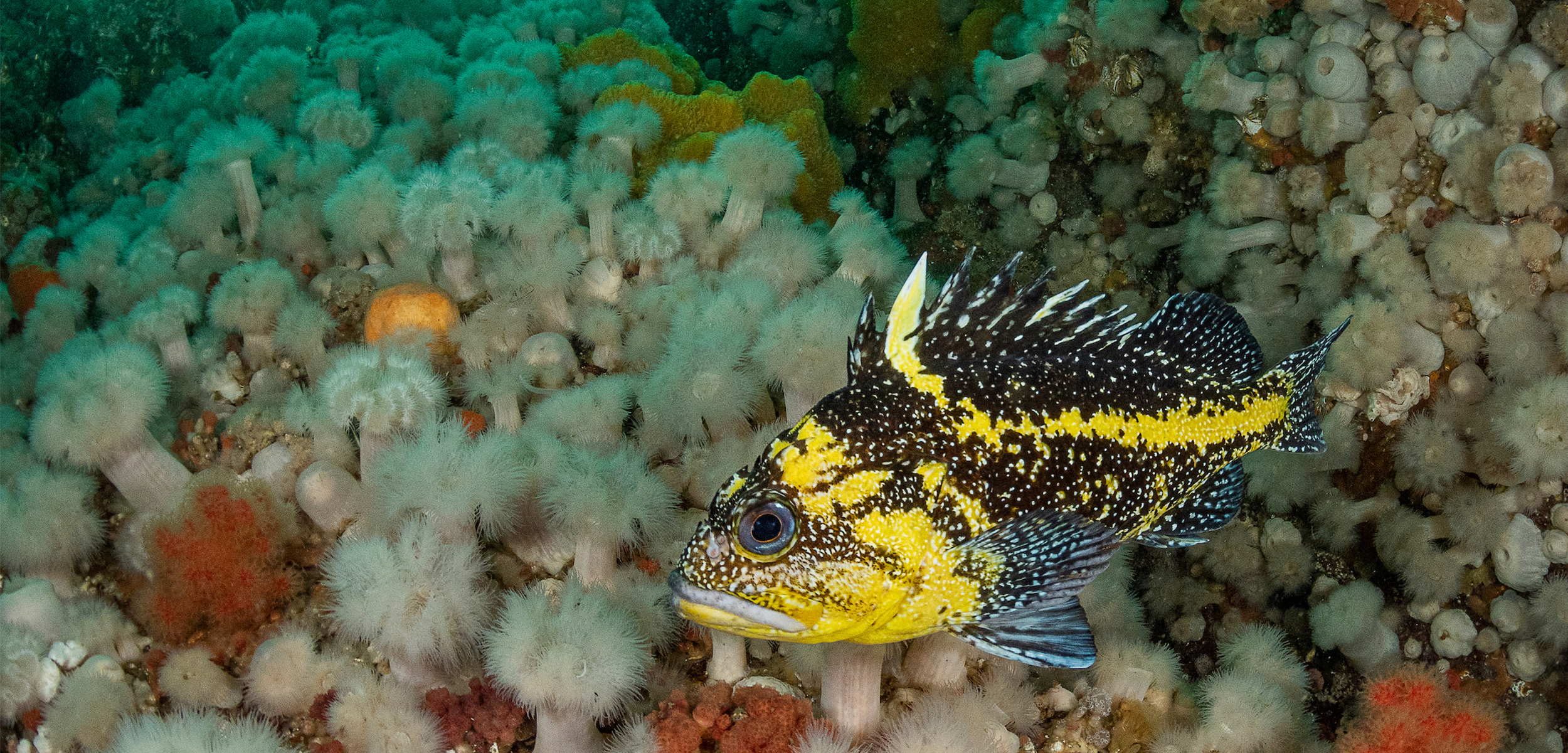Pandemic Poaching Sets Rockfish Conservation Effort Back Years
Illegal fishing in rockfish conservation areas around Galiano Island, British Columbia, spiked dramatically in 2020 and 2021.
Article body copy
Since the COVID-19 pandemic hit in early 2020, another scourge has been rampant around southwestern British Columbia’s Galiano Island: illegal fishing. In the past two years, suspected poaching incidents increased dramatically in three marine reserves near the island, which are designed to protect rockfish.
“It’s really quite disappointing,” says Natalie Ban, a professor of environmental studies at the University of Victoria in British Columbia, and lead author of a recent study. “Things were looking up … and then the pandemic hits and things seem to have fallen apart on the compliance front.”
Rockfish are slow growing, slow to mature, long lived, and stay close to home, making recovery from overfishing a challenge.
At least 37 species are found in BC waters. Between 2003 and 2007, Fisheries and Oceans Canada (DFO) designated 164 rockfish conservation areas (RCAs) covering about 4,800 square kilometers of coastal British Columbia. The latest study results raise concerns about the ability of these marine reserves to protect rockfish.
Jeff Marliave, a former senior research scientist with nonprofit Ocean Wise, laments the increase in poaching during the pandemic. The study suggests the rise in illegal fishing might be linked to a perceived reduction in enforcement during COVID-19 lockdowns. “People think they can get away with more, and they probably can,” he says.
According to DFO representative Leri Davies, there may have been a dip in enforcement patrols at the start of the pandemic as the department worked out COVID-19 protocols, but this was offset, in part, by aircraft surveillance flights.
In one high-profile case during the pandemic, a provincial court judge in Sechelt, northwest of Vancouver, British Columbia, fined two anglers CAN $5,000 each, plus other penalties, for rockfish and lingcod violations. One was also ordered to forfeit his sailboat.
But Ban says that such fines are too infrequent to represent a major deterrent. “It’s a serious and ongoing problem that there’s just not enough resources within DFO to do the enforcement that needs to be done,” she says.
Marliave says that anglers who choose to disregard fishing closures may not understand the ecological repercussions of their actions. Rockfish species such as quillback and yelloweye rockfish can live more than a century—well beyond most humans. “Taking the really old ones is the worst crime,” he says, because they are the best breeders.
“It’s going to be a long, long time before we see RCAs succeed,” adds Marliave, who did not participate in the study.
The surge of poaching comes as particularly bad news because, for the previous five years, concerted efforts by Ban and collaborators at the Galiano Conservancy Association to reduce illegal fishing seemed to have been working. During an intensive outreach and education campaign from 2014 to 2019, suspected illegal fishing incidents within the RCAs declined from 42 percent of days monitored to just 14 percent.
The following year, public health measures to contain COVID-19 put an end to the outreach effort. Instead, the Galiano Conservancy Association relied primarily on land-based trail cameras to document fishing within the RCAs.
Ban’s research suggests that lack of education and outreach during the pandemic played a factor in increased poaching. Whether anglers deliberately violated the regulations or acted out of ignorance—perhaps because of being new to fishing or unfamiliar with the area—is an open question.
For those who may be unsure of the rules, online resource Angler’s Atlas has developed the free MyCatch app, which visually alerts fishers when they enter an RCA. “There are so many [RCAs], and they’re in odd shapes,” says company owner Sean Simmons about why anglers may poach unintentionally.
Regardless of whether it was accidental or deliberate, the new study shows an increase in illegal fishing activity across all sites monitored by trail cameras compared with before the pandemic, even as total fishing effort in the RCAs remained fairly consistent. At one site, the number of incidents (per 100 days of monitoring) increased from zero in 2019 to 60 in both 2020 and 2021.
In fact, the pandemic set the whole outreach program back to square one—and then some. In 2020 and 2021, the median number of angling incidents (per 100 days of monitoring) were 22 and 38, respectively—a dramatic increase over the 12 incidents observed in 2015, when the study began.
As Ban’s team continues their work, they plan to collaborate with First Nations, who have a constitutional right to fish in RCAs. By understanding how often Indigenous fishers are active in the marine reserves, the researchers can account for those boats and develop a more complete picture of fishing effort.
Despite the study’s disappointing results, Ban says dockside surveys of anglers show support for greater compliance with regulations. “They want to see more enforcement. They want to see people punished who don’t follow the rules.”

